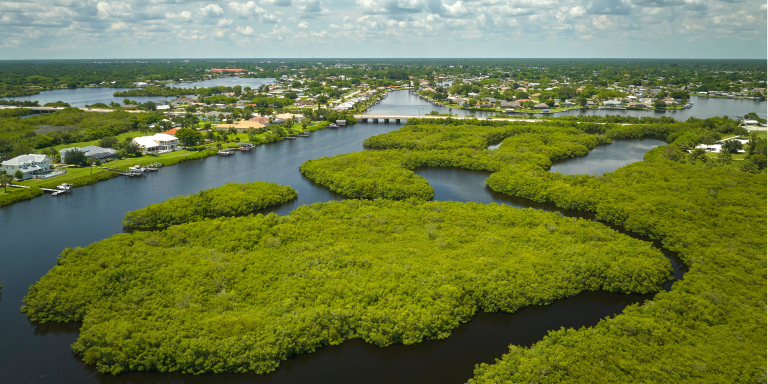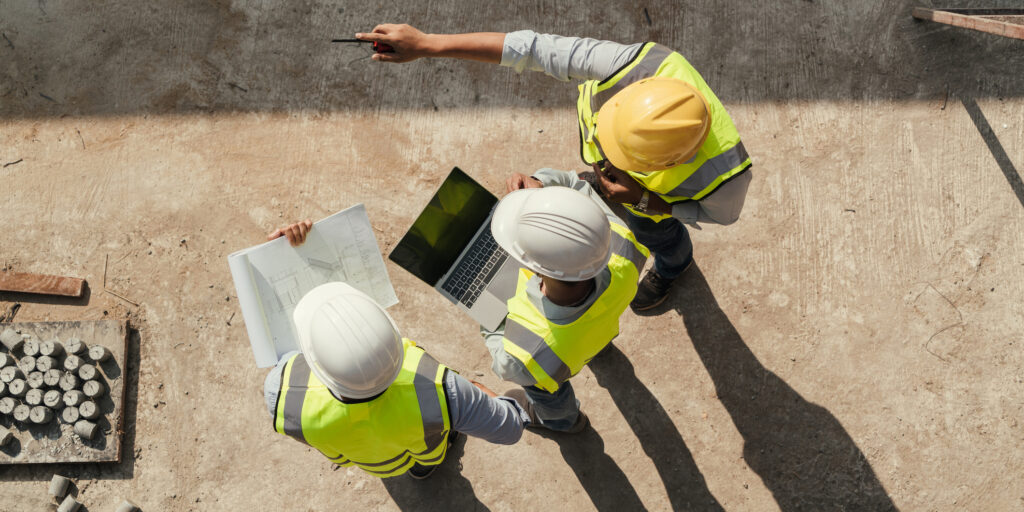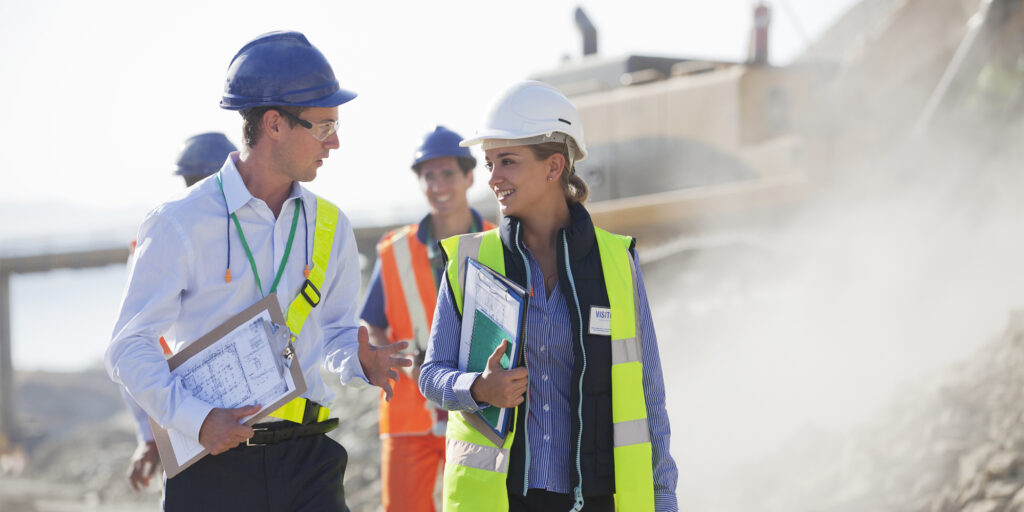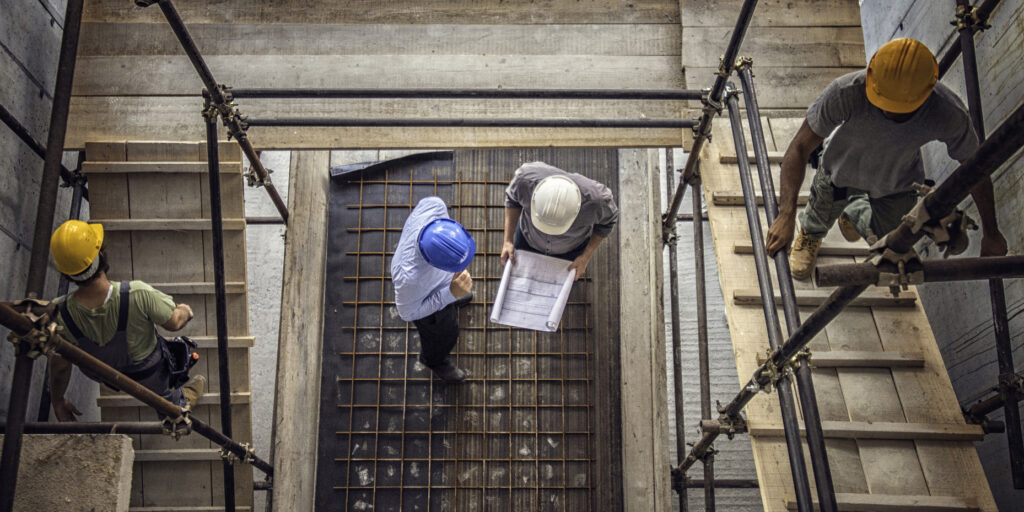— 5 min read
Navigating the Challenges of Industrial Construction in Wetland Areas
Last Updated Dec 3, 2024
Last Updated Dec 3, 2024

Industrial construction in Florida presents unique challenges and opportunities for construction companies, especially because over 31% of the state is wetlands. As the demand for logistics and distribution facilities grows, understanding the nuances of constructing these large-scale projects increases.
The complexities of industrial construction in Florida and other wetland areas involve numerous unique environmental challenges and safety protocols. This article will explore some insights on overcoming these obstacles to get industrial projects completed.
Table of contents
Compliance With Environmental Regulations
Florida’s construction landscape is characterized by unique environmental considerations. The presence of protected species in extensive wetland areas requires additional planning strategies and specialized mitigation efforts.
For example, gopher tortoises are heavily protected in Florida. Florida requires contractors to conduct a gopher tortoise survey and relocate the animals if their presence is discovered. An environmental team will come out and comb the entire area, looking for their burrows.
When they’re discovered, excavation or construction work is prohibited until the tortoises are moved off-site. To relocate them, a PVC tube is placed down the burrow to the end. Excavation is done along the pipe to reach the tortoises, which are then placed in a container and relocated to a farm or facility where they can roam freely and remain in a protected environment.
Additionally, the high water table in many areas of Florida, often about four feet below the surface, complicates deep excavation work for underground utilities. The additional effort and coordination by sitework or earthwork trade partners is paramount in making sure utilities are successfully installed in a timely manner.
This effort is further complicated by the large amount of wetlands in the area and specific requirements in managing the dewatering as to not create further wetland impacts.
We’ve had to spend a lot of time dewatering areas and working around existing wetlands. One particular project was surrounded by roughly 500 acres of wetlands, and it required strategic efforts for us to manage the water levels and stay in compliance with environmental regulations.
Kyle Shank
Senior Project Manager
Frampton Construction
Permitting for Deep Utilities & Stormwater Systems
Permitting can sometimes be a long headache, particularly on projects in environmentally sensitive areas. The influx of construction in larger municipalities, like Tampa or Dallas, puts a lot of strain on local AHJs. In these areas, it can sometimes take years to get permits issued to install utilities or begin site work.
Site work prepares the location for the vertical building. At this phase, the project may require what are called “deeper utilities.” This can include regular utility systems such as sewer, plumbing or electrical, as well as the storm system, where rainwater flows into the municipality's storm system. Permitting for these systems can take time — if you don't have those utilities in place, it can put your project out of phase or out of sequence.
As part of the permitting process, municipalities calculate stormwater runoff — if the amount of expected runoff is over the limit, the project may require plans for stormwater retention.
Many projects built in wetlands will require a containment pond to control the amount of stormwater that flows into the storm system. Some cases can require the construction of an underground vault system for stormwater storage in order to maximize building size on a specific site without losing essential parking spaces to serve the building users.
The stormwater detention vault system acts as a way for water to be directed from the actual pond itself. As the pond reaches a certain level, it will flow into this underground vault system and then slowly dissipate back into the existing water table over time.
Coordinating Utilities and Offsite Improvements
Utility coordination and stormwater management are both major aspects of industrial construction projects, especially in areas prone to heavy rainfall and environmental sensitivity. Some projects require significant offsite improvements to mitigate their impact on local communities.
We actually ended up building three different turn lanes into one of our project sites near Tampa. There were three six-inch primary power lines that powered all of the neighborhoods behind us, so it required a lot of coordination with existing utilities. We had to work around these utilities carefully. If you accidentally put a bucket through one of those lines, it would shut down the power for all the houses adjacent to the site.
Kyle Shank
Senior Project Manager
Frampton Construction
Offsite improvements are a pretty key factor for closing out the project and for ensuring that incoming tenants can begin to use their facility. If the turn lanes aren’t complete, it doesn’t matter how quickly the project is built, especially if employees can’t access the industrial facilities with their materials or trucks.
Stormwater management also helps prevent flooding and ensure the project's longevity. Depending on the area, the civil engineers may have to design the stormwater infrastructure based on a hundred-year storm calculation.
This means they design for the worst possible storm expected in the next 100 years so make sure that if such a storm occurs, the building does not become completely flooded. Some municipalities even require designs to withstand 500-year or 1000-year storms, the parameters of which can be challenging to quantify and design within.
Keeping the Project Team Connected
With all of the varying factors to consider with industrial construction in wetland areas, technology plays a major role in how quickly companies can deliver projects. Old school methods, such as Excel sheets and manual mark-ups, can often lead to delays and missed details.
To avoid these pitfalls, it’s important to make sure that all teams, both on the design and trade partner sides, are fully integrated onto a project management platform. Any changes to the design or scope need to be understood and integrated in the field as fast as possible. A unified digital platform can greatly simplify correspondence about project updates to make sure everyone — the ownership team, construction team and design team — is on the same page.
Was this article helpful?
Thank you for your submission.
0%
0%
You voted that this article was . Was this a mistake? If so, change your vote here.
Scroll less, learn more about construction.
Subscribe to The Blueprint, Procore’s construction newsletter, to get content from industry experts delivered straight to your inbox.
By clicking this button, you agree to our Privacy Notice and Terms of Service.
Categories:
Tags:
Written by
Kyle Shank
Kyle Shank brings over a decade of experience in the construction industry to his role as Senior Project Manager at Frampton Construction. Kyle specializes in project management, value engineering, estimation, contract negotiation. Prior to joining Frampton, Kyle worked as a project manager at BBL Construction Services in the medical facilities division. Kyle holds a Bachelor of Business Administration with a focus in Business Administration and Management from the State University of New York at Plattsburgh.
View profileAnthresia McWashington
19 articles
Anthresia McWashington is a Content Manager at Procore. She previously worked as an editor and reporter for Gulf Energy Information and Houston Media Group. She earned her BA in Communications and Journalism from the University of Houston. Anthresia loves track & field and practicing her French. She lives in Houston.
View profileReviewed by
Janine Trinidad
21 articles
Janine Trinidad is a Construction Educational professional for Procore Technologies. In previous roles, Janine managed all phases of construction on hotel, mixed-use, and institutional projects in the San Francisco Bay area. She was responsible for negotiating contract budgets and change orders, managing RFIs and submittals, and overseeing quality control, among other duties. She is also a certified transformational coach with a focus on women-centered and trauma-informed methods. She is passionate about transforming the construction industry to be a healthier, more successful and welcoming place to work and believes technology and education are allies in doing so.
View profileExplore more helpful resources

Construction Manager vs. Project Manager: Comparing Leadership Roles
Skillful oversight of construction projects allows companies to deliver to owners on time and within budget. Construction managers (CMs) and project managers (PMs) provide the necessary supervision to keep projects...

Holistic Construction Project Oversight: Aligning Relationships & Processes
All parts of a construction project are connected. A delayed approval for a change order can impact a project’s timeline, required overtime and, ultimately, the budget. Communication with an owner...

Building Together: How Integrated Project Delivery Creates Shared Value
As technology and innovative processes continue to evolve the construction industry, the need for openness and collaboration among teams and stakeholders has increased significantly. Traditional project delivery methods, such as...

Construction Collaboration: Navigating the Intersection of Project Management and Accounting
Accounting and project teams work together to move the financial aspects of projects through to completion. Data sharing allows for concurrent review to make this possible. Teams need to share...